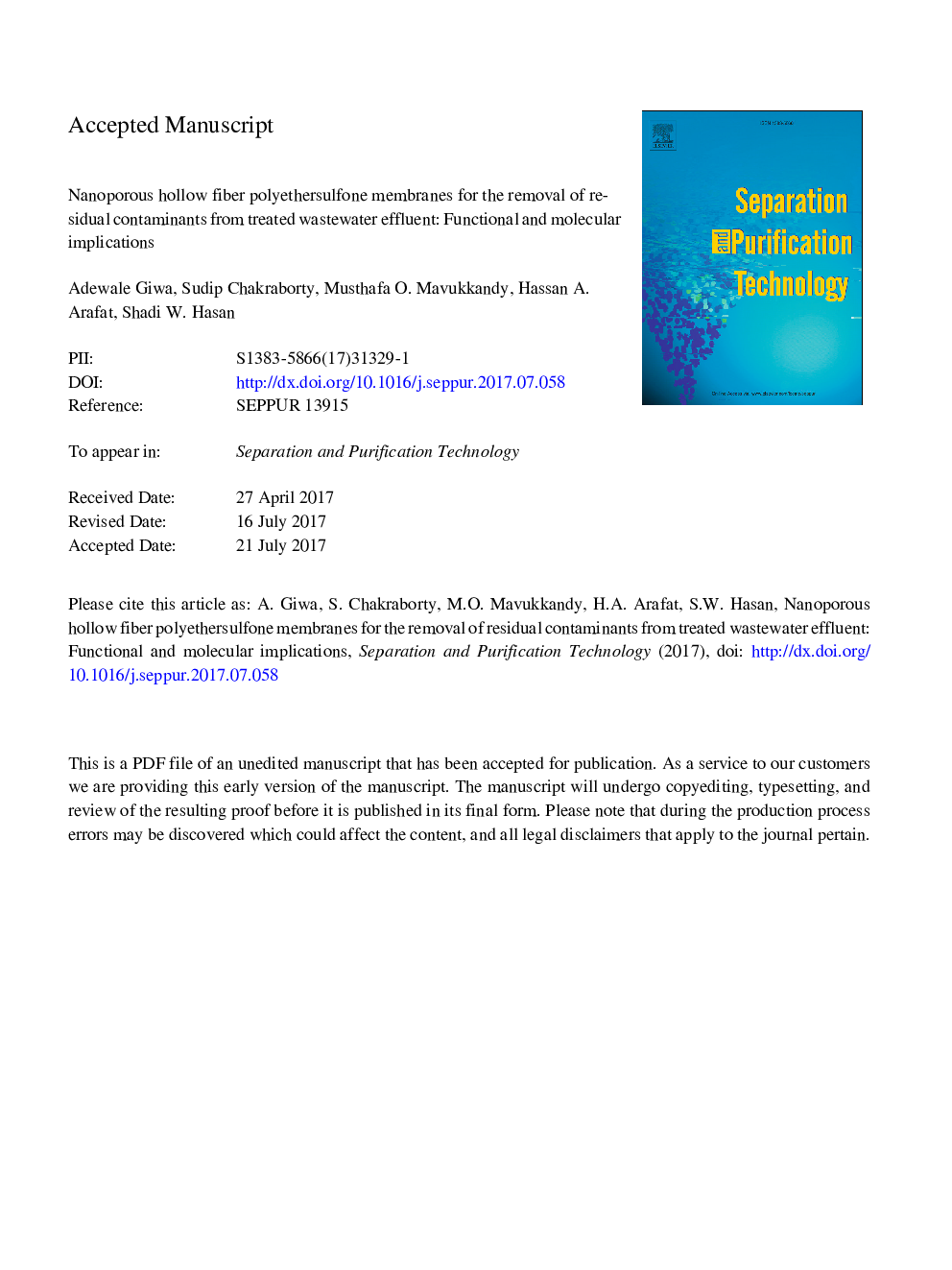| کد مقاله | کد نشریه | سال انتشار | مقاله انگلیسی | نسخه تمام متن |
|---|---|---|---|---|
| 4989653 | 1456931 | 2017 | 32 صفحه PDF | دانلود رایگان |
عنوان انگلیسی مقاله ISI
Nanoporous hollow fiber polyethersulfone membranes for the removal of residual contaminants from treated wastewater effluent: Functional and molecular implications
دانلود مقاله + سفارش ترجمه
دانلود مقاله ISI انگلیسی
رایگان برای ایرانیان
کلمات کلیدی
موضوعات مرتبط
مهندسی و علوم پایه
مهندسی شیمی
تصفیه و جداسازی
پیش نمایش صفحه اول مقاله

چکیده انگلیسی
Hollow fiber membranes consisting of polyethersulfone (PES) reformed with high proportions of OH, aryl-N and alkyl-F groups in nonsolvent additives were compared for the removal of residual Cr (VI), COD, and bacteria from treated wastewater effluent by studying the underlying functional and molecular interactions during dope preparation and phase separation. These interactions were also studied and compared in the context of dope and membrane characteristics such as dope viscosity, membrane morphology, water contact angle, functionalities in the fabricated membranes, pure water permeability and rejection of residual solute. The membranes were characterized via Scanning Electron Microscopy (SEM), Fourier Transform Infrared (FT-IR) spectroscopy and Raman spectroscopy. For nonsolvent additives with OH group, molecular weights and dope viscosity exhibited more impact on phase separation whereas for those with aryl-N and alkyl-F groups, phase separation was influenced by thermodynamic instability. Functional interactions also influenced the lumen shapes and membrane thickness. The lumens changed from spherical to elliptical-type shapes when aryl-amide and fluoroalkyl groups were added. Additives containing -OH group provided the highest contaminant rejection and the least flux whereas those containing aryl amide and fluoroalkyl groups enhanced the water permeability across the PES-based membranes but reduced the contaminant rejection. The PES membrane modified with OH group was able to reduce residual contaminant concentrations from 14Â ppb Cr(VI), 36.9Â ppm COD, and 18,300Â ppm total bacterial counts (TBC) to 8.3Â ppb Cr(VI), 20.3Â ppm COD, and 8601Â ppm TBC with an intrinsic water permeability of 22.94Â LMH/bar.
ناشر
Database: Elsevier - ScienceDirect (ساینس دایرکت)
Journal: Separation and Purification Technology - Volume 189, 22 December 2017, Pages 20-31
Journal: Separation and Purification Technology - Volume 189, 22 December 2017, Pages 20-31
نویسندگان
Adewale Giwa, Sudip Chakraborty, Musthafa O. Mavukkandy, Hassan A. Arafat, Shadi W. Hasan,